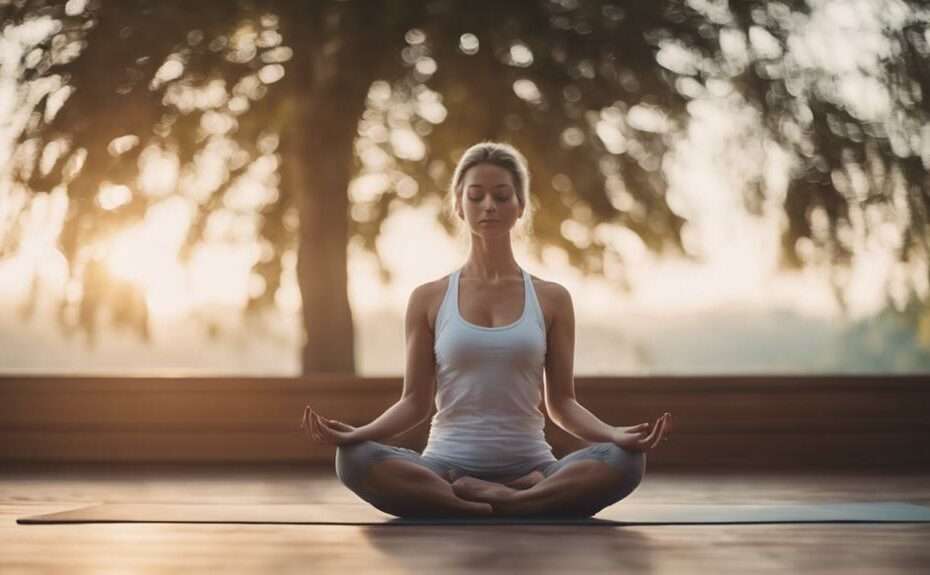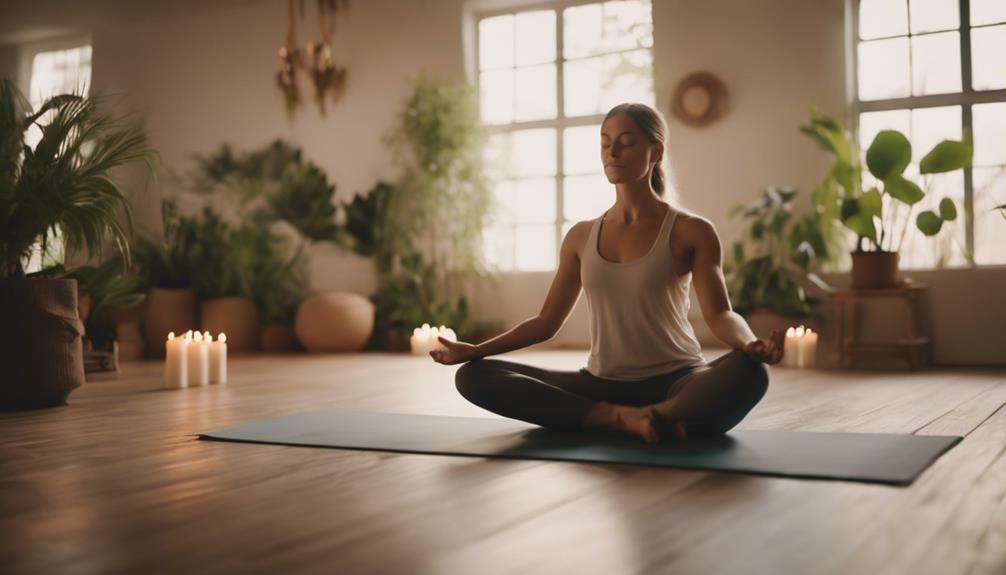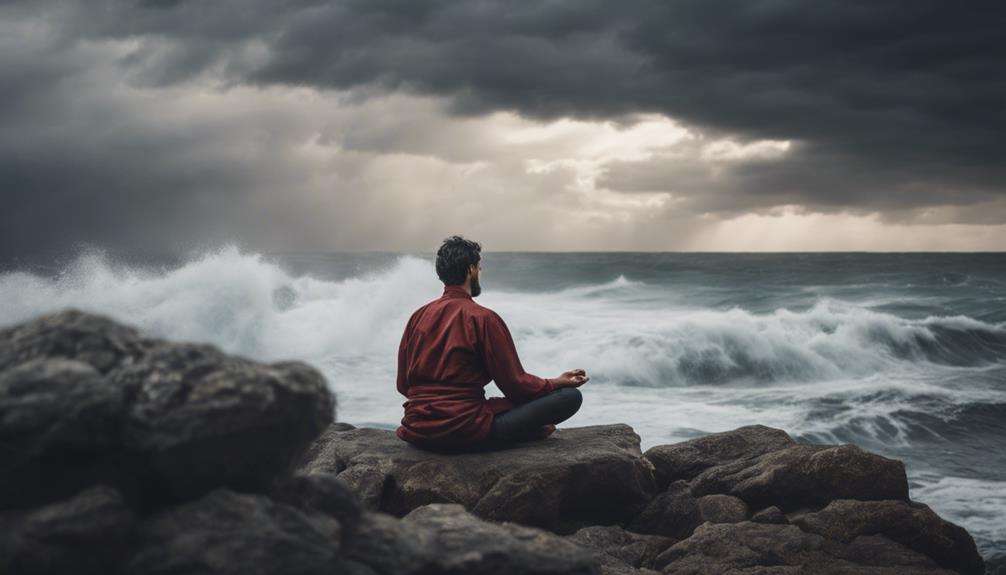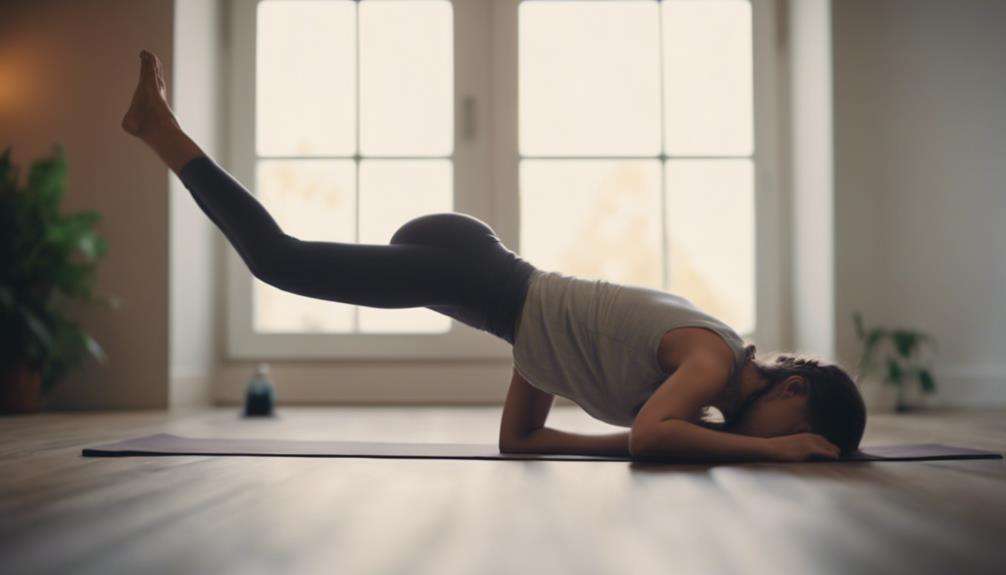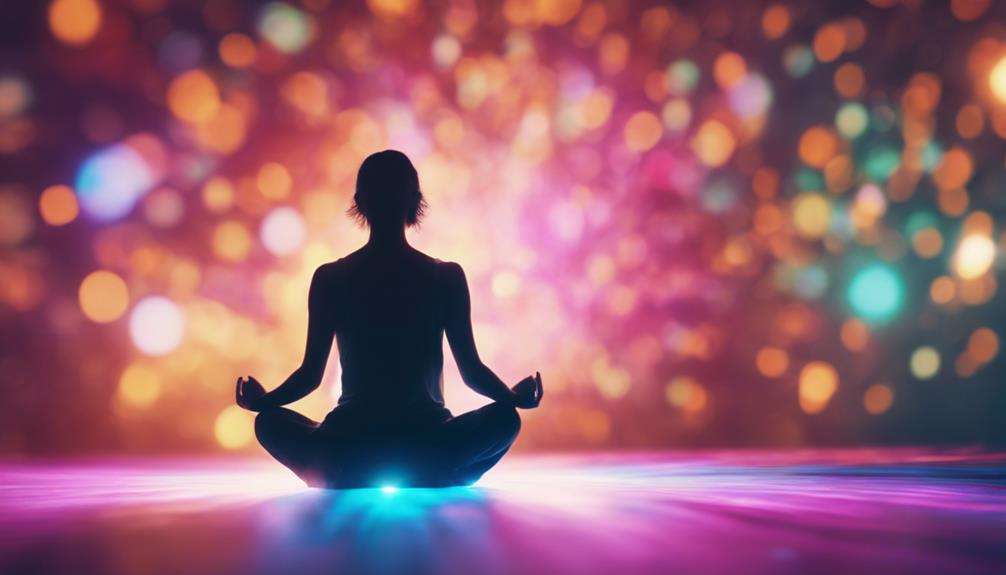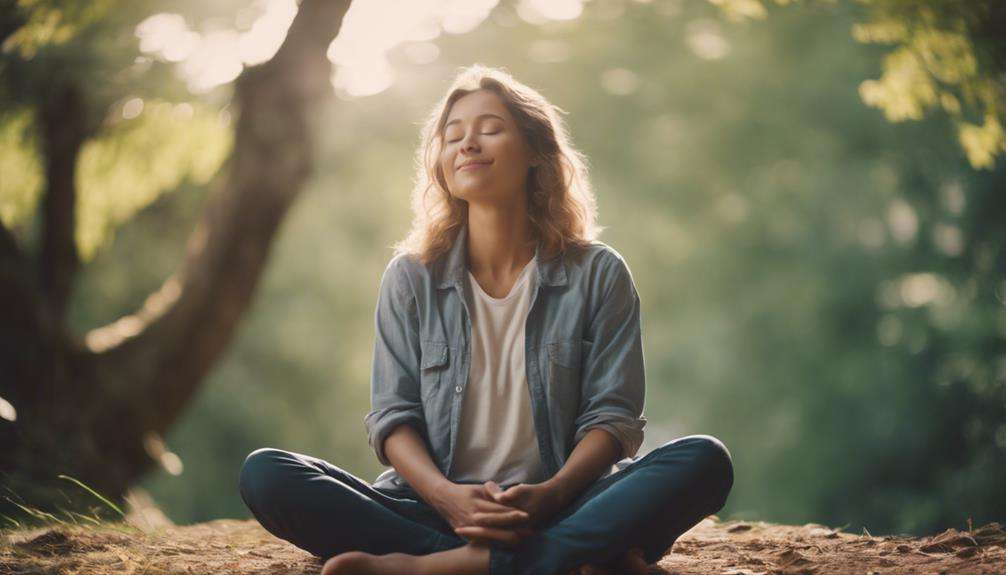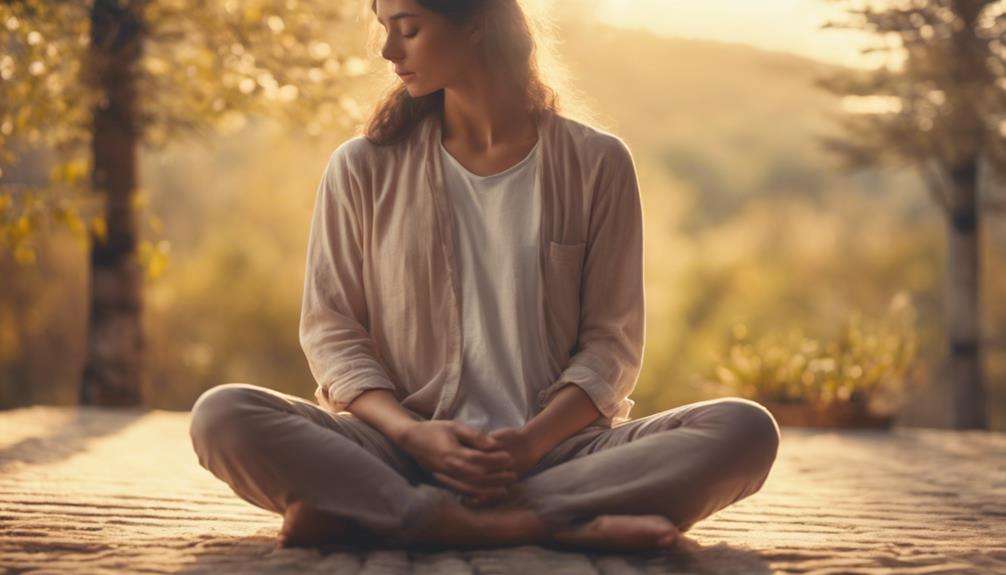You might think that twisting yourself into a pretzel could be the last thing to calm your mind, but in the world of yoga, certain poses work wonders in reducing stress and promoting overall wellness.
Imagine finding a sanctuary within yourself where each stretch and breath takes you closer to tranquility.
As you explore the world of yoga poses tailored for stress relief, you'll uncover a treasure trove of techniques waiting to be embraced, leading you on a path towards inner peace and rejuvenation.
Key Takeaways
- Yoga poses like Child's Pose and Legs Up the Wall reduce stress and promote emotional well-being.
- Mind-body techniques such as breath awareness and meditation enhance mental clarity and overall wellness.
- Pranayama techniques like controlled breathing help calmness and connect with body's needs.
- Physical posture alignment and inversions aid in reducing stress, boosting mental clarity, and enhancing body awareness.
Yoga Poses for Stress Relief
To begin relieving stress through yoga poses, start by incorporating gentle movements and deep breathing into your daily routine. Child's Pose helps quiet the mind, reduce stress, and restore the nervous system. This pose allows you to surrender and let go, promoting a sense of calmness.
Legs Up the Wall Pose is excellent for reducing stress and calming the mind. By inverting your legs, you can improve blood circulation and restore balance to your body.
Bridge Pose acts as a mild inversion that calms the brain and nervous system, alleviating stress in the process. Corpse Pose is the ultimate relaxation pose. It reduces stress, anxiety, and promotes overall well-being.
Eagle Pose is fantastic for stress relief as it improves concentration and strengthens various body parts. Incorporating these poses into your routine will help you alleviate stress, restore your nervous system, and promote overall well-being.
Mind-Body Connection in Yoga
Hey there!
Let's explore how yoga deepens the bond between your mind and body.
By focusing on breath awareness, aligning your physical posture, and practicing mental focus techniques, you can enhance this connection.
These aspects of yoga help in reducing stress, promoting relaxation, and fostering a sense of overall well-being.
Breath Awareness Benefits
Enhance your mind-body connection through yoga by focusing on breath awareness. By paying attention to your breath, you can promote relaxation, reduce stress, and cultivate a sense of calm.
Incorporating meditation into your yoga practice enhances mental clarity and aids in anxiety reduction. Mindfulness during breathing exercises fosters presence, allowing you to be fully aware of the moment.
Through breath awareness, yoga encourages self-awareness and self-care practices, helping you tune into your body's needs and emotions. Take the time to connect with your breath during yoga sessions to experience the profound benefits it offers for your overall well-being.
Embrace the power of conscious breathing to nurture your mind, body, and spirit.
Physical Posture Alignment
Improve your mind-body connection in yoga through conscious attention to physical posture alignment. Proper alignment in yoga poses is key to reaping optimal benefits from your practice. When you focus on alignment, you enhance body awareness, reduce the risk of injury, and promote overall wellness.
Mindful alignment cues help you engage specific muscles, leading to better balance and a deeper connection between your body and mind. By aligning your physical posture correctly, you set the foundation for a safer and more effective practice. Remember, paying attention to alignment in yoga not only refines your poses but also cultivates a harmonious relationship between your body and mind.
Mental Focus Techniques
For a deeper connection between your mind and body in yoga, focus on implementing mental focus techniques to enhance your practice. Incorporate these essential elements into your yoga routine:
- Practice meditation to enhance mental clarity, reduce anxiety, and promote relaxation.
- Cultivate mindfulness during your yoga sessions to foster a sense of presence and calmness.
- Utilize breathing techniques to promote relaxation, reduce stress, and enhance your overall well-being.
Balancing Poses for Emotional Well-Being
Discover how incorporating balancing poses like Tree Pose and Eagle Pose into your yoga practice can enhance your emotional well-being and inner stability. These poses not only improve your balance and coordination but also help in fostering emotional stability, calm, and centering. By focusing on maintaining these poses, you can enhance your concentration and build resilience against stress and anxiety.
Tree Pose, also known as Vrikshasana, strengthens your legs and core while stabilizing your mind, promoting emotional resilience in challenging situations. On the other hand, Eagle Pose, or Garudasana, challenges your coordination, builds physical strength, and cultivates a deep sense of inner peace and harmony within yourself.
Incorporating these balancing poses regularly into your yoga routine can help you find a greater sense of peace and emotional well-being, allowing you to navigate life's challenges with a more centered and stable mindset.
Restorative Poses for Relaxation
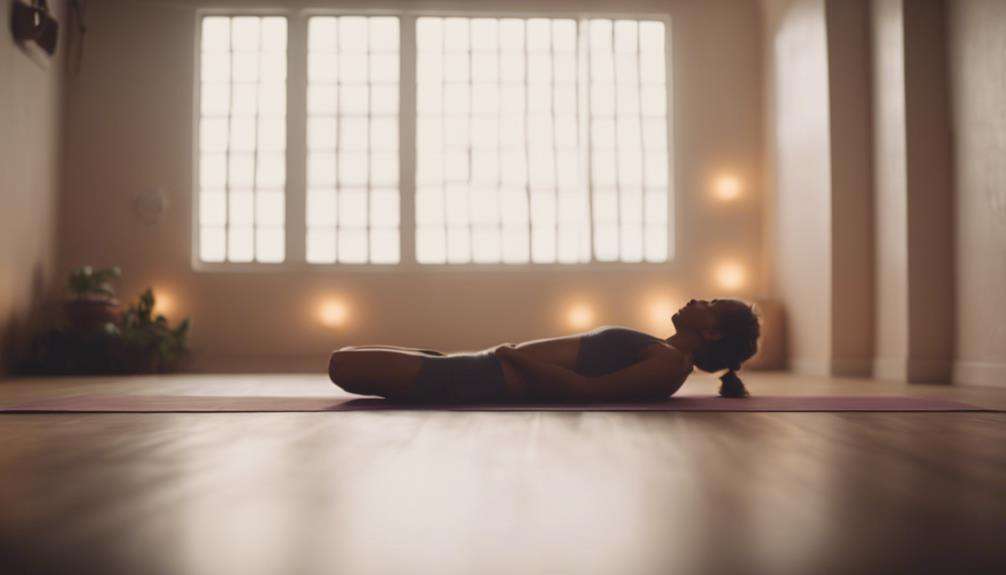
Ready to unwind and relax?
Gentle Reclining Twists, Supported Child's Pose, and Legs up the Wall are your go-to restorative poses for ultimate relaxation.
These poses gently stretch your body, calm your mind, and promote a deep sense of peace and tranquility.
Give yourself the gift of restoration and let go of stress with these soothing postures.
Gentle Reclining Twists
Gently winding your body into reclining twists during a yoga session can work wonders in releasing tension and promoting deep relaxation. These restorative poses not only help release tension in your spine and back muscles but also promote relaxation, reduce stress, and calm your nervous system. By incorporating gentle reclining twists into your practice, you can improve flexibility in your spine and hips, ultimately enhancing your overall well-being.
Additionally, these twists aid in increasing circulation, leaving you with a sense of rejuvenation. Remember, integrating reclining twists into your routine can bring about a profound sense of inner peace and relaxation.
- Release tension in the spine and back muscles.
- Promote relaxation, reduce stress, and calm the nervous system.
- Improve flexibility in the spine and hips for overall well-being.
Supported Child's Pose
Easing into Supported Child's Pose can provide a deeply calming and rejuvenating experience for both your body and mind. This soothing pose targets the adrenal glands, reducing stress levels effectively.
As you sink into Child's Pose, focus on deep breathing to calm your mind and promote relaxation. Feel the gentle stretches in your hips, thighs, and lower back, releasing tension and fostering a sense of calm.
Supported Child's Pose also helps in relieving tension in the neck, shoulders, and spine. By resting your forehead on the mat or a pillow, you can further quieten your mind and enhance the relaxation benefits of this pose.
Embrace the tranquility and serenity that Supported Child's Pose offers.
Legs up the Wall
To enhance relaxation and reduce stress, consider incorporating the restorative pose Legs up the Wall into your yoga practice. This pose is beneficial for stretching the back of the legs, promoting lymph drainage, and improving blood circulation throughout the body. Here's why Legs up the Wall is a great addition to your routine:
- Relieves tension in the lower body
- Enhances calmness and well-being
- Facilitates relaxation and rejuvenation
Flowing Sequences for Stress Reduction
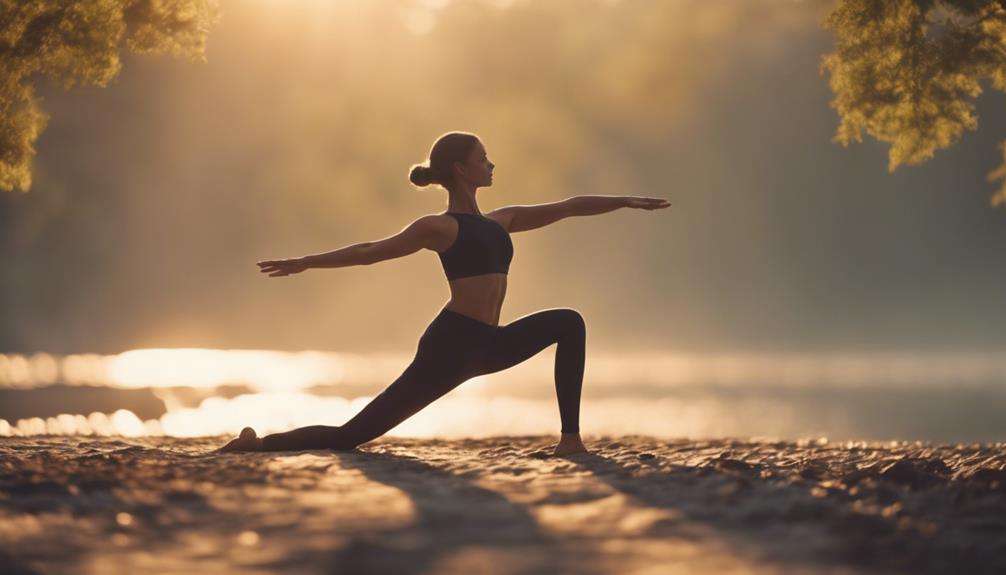
Embark on a journey towards stress relief with flowing sequences in yoga, combining movement and breath to promote flexibility, strength, and relaxation. Flowing sequences like Sun Salutation are a powerful tool for stress reduction, integrating the flow of movements with the rhythm of the breath. These sequences not only enhance physical well-being by improving flexibility and strength but also play a vital role in calming the mind and increasing mindfulness.
Sun Salutation, a well-known flowing sequence, serves as a comprehensive warm-up routine that boosts circulation and uplifts the spirit. By engaging in these dynamic movements, you can release tension, clear your mind, and cultivate a sense of inner peace. Regular practice of flowing sequences not only reduces stress levels but also contributes to overall wellness by harmonizing the body, mind, and spirit. Embrace the beauty of flowing sequences in yoga to nurture your well-being and discover inner tranquility.
Inversions for Mental Clarity
Discover how inversions in yoga can enhance your mental clarity and focus through increased blood flow to the brain. When you practice inversions like the Legs-Up-the-Wall Pose (Viparita Karani), you aren't just turning upside down; you're giving your brain a refreshing boost. Here's how inversions can benefit your mental well-being:
- Boost Blood Flow: By flipping upside down, you increase blood flow to your brain, helping you think clearer and stay focused.
- Reduce Stress: Inversions calm the nervous system, promoting relaxation and reducing stress levels.
- Improve Circulation: These poses aid in circulation, reducing fatigue and lifting your mood.
Incorporating inversions into your yoga practice regularly can go a long way in enhancing your mental clarity, relieving tension, and promoting overall wellness. So, next time you're on the mat, consider adding some inversions to reset your mind and find balance in your day.
Pranayama Techniques for Calmness
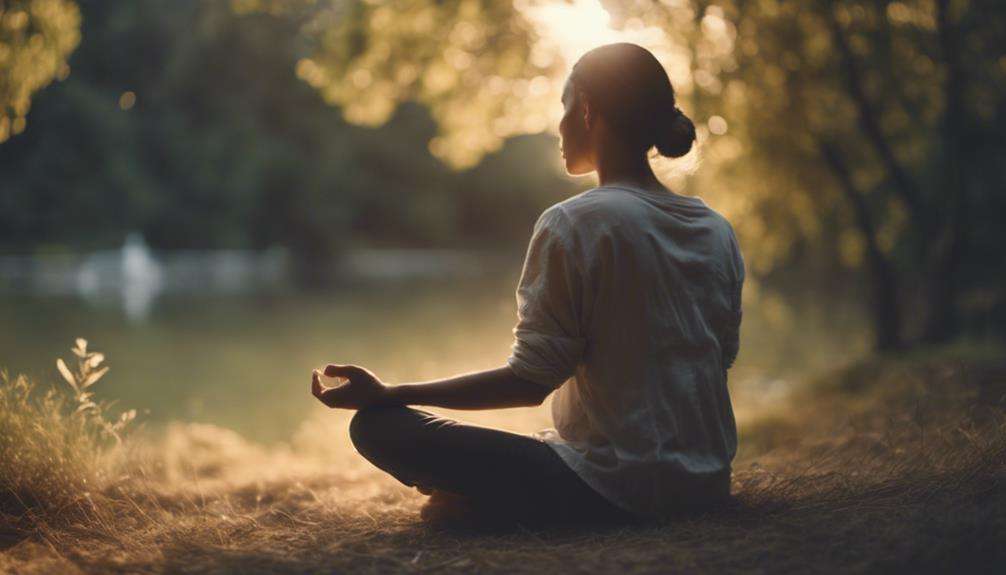
With your mental clarity enhanced through inversions, let's now explore how incorporating Pranayama techniques can further promote calmness and reduce stress levels in your yoga practice.
Pranayama techniques involve controlled breathing, such as deep breathing, which can calm the mind, regulate the nervous system, and promote relaxation. Nadi Shodhana, known as alternate nostril breathing, is a specific pranayama technique that enhances mental clarity and focus.
By practicing pranayama regularly, you can lower your heart rate, decrease anxiety, and improve your overall well-being. These techniques are integral to yoga practice for stress relief and promoting wellness.
Yoga Nidra for Deep Relaxation
For deep relaxation and restful sleep, consider incorporating Yoga Nidra into your wellness routine. This guided meditation technique is a powerful tool for reducing stress, anxiety, and insomnia while promoting overall well-being. Here are some key benefits of practicing Yoga Nidra:
- Guided Meditation: Through Yoga Nidra, you'll experience a guided meditation that helps calm the mind and relax the body, allowing you to enter a state of deep relaxation.
- Breath Awareness: By focusing on your breath during Yoga Nidra, you can cultivate a sense of inner peace and tranquility, helping to reduce stress and anxiety.
- Body Scanning: The practice involves systematically scanning your body for tension and releasing it, promoting physical relaxation and mental clarity.
Yoga Nidra isn't just about relaxation; it also enhances self-awareness and can positively impact your nervous system by lowering cortisol levels. Incorporating this practice into your routine can lead to a profound sense of calm and rejuvenation.
Frequently Asked Questions
Which Yoga Is Best for Reducing Stress?
To reduce stress effectively through yoga, focus on deep breathing, gentle stretching, and mindful movement. Incorporate grounding poses and relaxation techniques for a calm mind. Practice emotional release, body awareness, and tension relief for overall wellness.
What Is the Most Relaxing Yoga Pose?
Like a gentle wave lulling you into a peaceful ocean, Corpse Pose (Savasana) is the ultimate relaxation. It eases stress, encourages mindfulness, and promotes total well-being through deep rest, calming the mind, and rejuvenating the body.
What Is Yoga Therapy for Stress?
To explore yoga therapy for stress, embrace breathwork techniques, mind-body connection, guided visualization, and progressive relaxation. Prioritize self-care practices, trauma-informed methods, coping strategies, emotional regulation, and stress management. This holistic approach promotes wellness and reduces stress effectively.
What Yoga Poses Help Anxiety?
To help with anxiety, focus on breathing exercises, gentle stretches, and mindful meditation. Grounding poses, restorative poses, and deep relaxation can also bring calm. Try seated postures, heart openers, hip openers, and forward folds for relief.
Conclusion
So next time you're feeling overwhelmed, remember that yoga poses are like a soothing balm for the soul, helping to melt away stress and promote overall wellness.
Just like a gentle wave washing over the shore, these poses can bring a sense of calm and balance to your mind and body.
Take a moment to breathe, stretch, and flow through these poses to find peace and relaxation in the midst of life's chaos.
Namaste.
